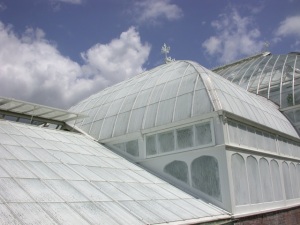Preservation Tax Credits – There are two kinds of tax credits available: income- and non-income-producing. If you have a rental house or commercial structure, then it is income-producing; if it is your house, then it does not generate any income for you. For an income-producing building, there is a federal income tax credit equal to 20% of your costs rehabilitating the building and a 20% state income tax credit. For most owner-occupied houses, non-income-producing as they are, it is a 30% state income tax credit only.
 In essence, for a non-income-producing property (like a homeowner’s residence), 30% of the cost of maintenance or remodeling can be taken as a state income tax credit. The credit is automatically spread over 5 years, and the owner must spend at least $25,000 within 2 years. And there are, of course, rules to follow.
In essence, for a non-income-producing property (like a homeowner’s residence), 30% of the cost of maintenance or remodeling can be taken as a state income tax credit. The credit is automatically spread over 5 years, and the owner must spend at least $25,000 within 2 years. And there are, of course, rules to follow.
A few of the most important rules: original windows must be maintained in place; front porches and facades need to stay as they are (or be returned to an earlier, known historic form); exposed exterior masonry – like foundation walls and chimneys – must not be painted if it is not currently painted. In general, the public areas of the house, especially what you would see from the front door, should not be altered.
There are, of course, exceptions to each of these, and the State Historic Preservation Office treats each application on its own merit. They are quite fair and can often discuss projects after an application is made to find a good solution to some tricky problem… and it goes without saying that 30% of your renovation costs is nothing to sneeze at, so once homeowners learn of the program, most chose to apply and do receive the credits in the end. 4/1 often completes preservation tax credit applications, and can answer any questions you may have about the program and the application.


In general, to be a local landmark your building must be significant historically or architecturally – not just a lovely, well-maintained historic home, but some place connected to a moment in local history or an important person. It is not a quickly-given honorific. In Durham specifically, the local landmark program is under scrutiny by the planning department and city council and will most certainly be revamped in the next year or so. All potential applicants are being asked to wait until the program and the application process are settled.
